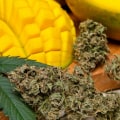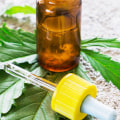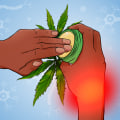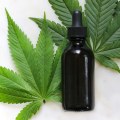CBD stops brain mechanisms that contribute to seizures by improving the release of the inhibitory neurotransmitter GABA. CBD increases anandamide in the brain. Increased levels of anandamide in the brain have been associated with a decrease in psychotic symptoms. CBD appears to have numerous potential benefits for brain health.
Improving concentration, relieving anxiety, and reducing inflammation are just a few of the ways the cannabinoid could strengthen the brain. Side effects of CBD include nausea, fatigue, and irritability. CBD can increase the level of anticoagulants and other medications in the blood by competing for the liver enzymes that break down these drugs. Grapefruit has a similar effect with some medications.
The nodes that have a higher degree of centrality in the CBD group have been colored red, while the nodes that have a higher degree of centrality in the vehicle group have been colored blue. We included studies that examined the effects of CBD on brain function in healthy volunteers and people diagnosed with a psychiatric disorder, including both the effects of CBD alone and a direct comparison with those induced by 9-tetrahydrocannabinol (THC), the main psychoactive component of cannabis. ARAS as a node, under the influence of CBD, may not be significantly smaller than these brain regions, but it is positively correlated with specific brain areas within these areas (fig. Future studies should consider reproducing the findings and expanding the inclusion of psychiatric patients, combining long-term treatment with CBD with neuroimaging evaluations.
A major safety issue related to CBD is that it is primarily marketed and sold as a supplement, not as a medication. CBD comes in many forms, such as oils, extracts, capsules, patches, vaporizers, and topical preparations for use on the skin. On the left (a) 2D axial maps showing the location of brain areas (red) with improved coupling to ARAS after CBD treatment are shown. All of these studies on the effects of CBD evaluated the administration of a single oral dose before the scintigraphy.
CBD can be easily obtained in most parts of the United States, although its exact legal status has been changing. Pharmacokinetic and behavioral profile of THC, CBD and the combination of THC+CBD after pulmonary, oral and subcutaneous administration in rats and confirmation of the in vivo conversion of CBD to THC. The CBD group had a significantly lower degree of centrality in the hippocampal, hypothalamus, cortex, cerebellum, brain stem, basal ganglia, midbrain, and bulge (**p. Cannabidiol (CBD) often appears in the media, and you might see it promoted as a complement to your post-workout shake or morning coffee.
The 2D maps show the neuroanatomical position of the areas of the brain that are most attached to the ARAS (highlighted in red) after treatment with CBD compared to the vehicle. Research has shown that CBD may have neuroprotective properties, meaning that the cannabinoid could heal the brain. During the analysis, it was discovered that each of the samples contained a small fraction of THC in addition to CBD.






